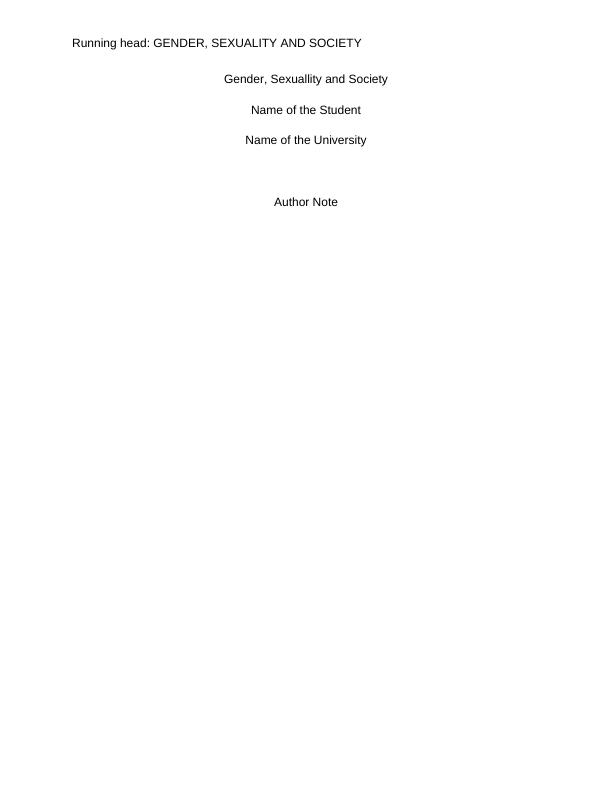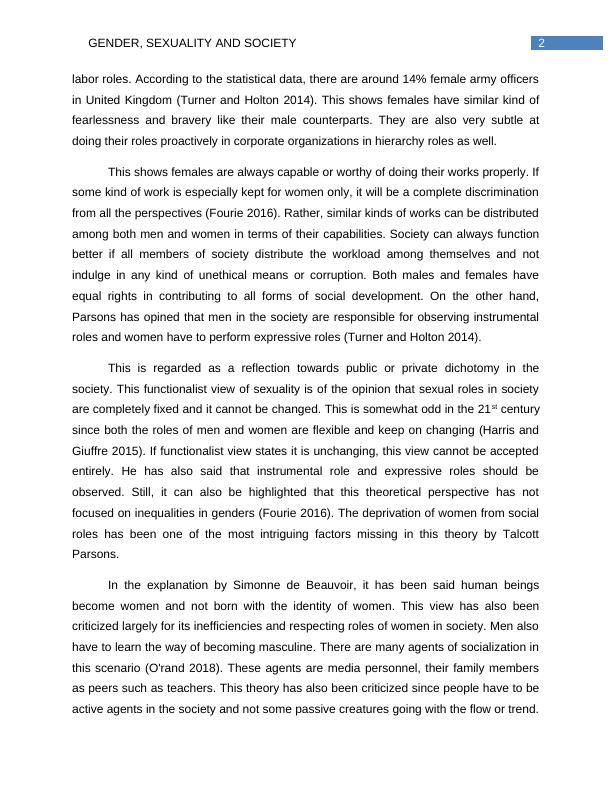Occupational Segregation And Gender Inequality
Critically discuss the work of TWO or more theorists that we have discussed during the module and apply those theoretical perspectives to at least THREE everyday experiences of gender and/or sexuality.
10 Pages3264 Words31 Views
Added on 2022-08-26
Occupational Segregation And Gender Inequality
Critically discuss the work of TWO or more theorists that we have discussed during the module and apply those theoretical perspectives to at least THREE everyday experiences of gender and/or sexuality.
Added on 2022-08-26
ShareRelated Documents
End of preview
Want to access all the pages? Upload your documents or become a member.
Functionalist Approach to Gender Roles in Society
|4
|856
|49
Theoretical Perspectives on Feminism and Gender Equality
|5
|925
|445
Feminist Social Theory and its Impact on Social Work Practice
|15
|4160
|473
Theories of Difference and Diversity
|12
|3343
|146
Gender and Feminism in the Organization
|8
|2060
|385
ATSGC3848 GENDER INEQUALITY
|8
|1878
|263



